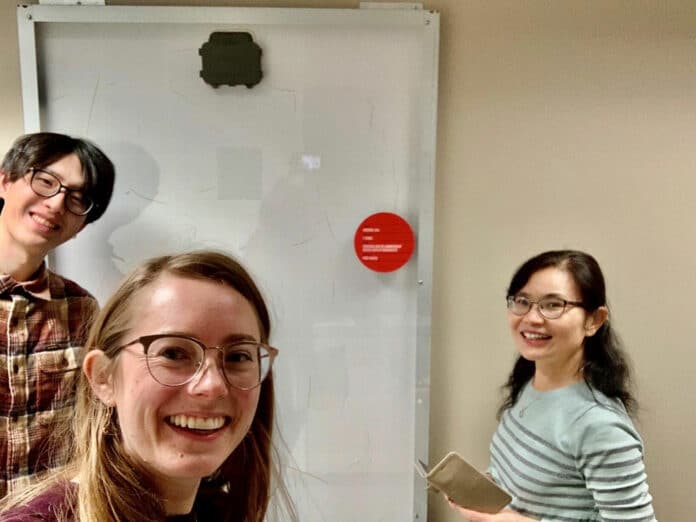Unlike diamonds, solar panels are not forever. Ultraviolet rays, gusts of wind, and heavy rain wear away at them over their lifetime. Nowadays, 30-to-35-year warranties are the norm for commercial solar panels, but there are concerns that some solar panel materials can show cracks and fail earlier.
That’s just what a team of NIST researchers – including Stephanie Moffitt, Po-Chang Pan, and Xiaohong Gu – set out to understand.
The backsheet layer of a solar module provides safety and environmental barrier to the high voltages running through the photovoltaic (PV) cells and electrical contacts within the core of the module. However, in the past decade, backsheet cracking has become one of the most observed failure modes in PV module field surveys.
For their study, the team used multiple accelerated weathering protocols to simulate aging in the field, exposing their samples to stressors such as heat, humidity, and ultraviolet light. They also had samples taken from a solar panel field in Arizona after seven years, which is when the panels started to show cracks.
Researchers found that cracks could form in the backing material (backsheets) of panels using a type of polyvinylidene fluoride (PVDF) polymer as a laminate. This happens especially when the polymer is mechanically stressed (pulled or stretched) in a specific direction, which weakens the material’s crystalline structure and when the outer layer is blended with acrylic polymers and pigments, which leads to chemical degradation that produces surface pits. The backsheet then cannot withstand the strain, and the pits cause micro-cracks.
Using microscopy techniques, the researchers also discovered a change in a backsheet material’s crystalline structure that happens during cracking. That structure transitions from alpha to beta phase, meaning the polymer chains begin packing in a more aligned formation.
During the tests, chemical degradation, surface pitting, polymer phase changes, and anisotropic polymer domains are all observed in aged backsheet samples. The results provide insight into the degradation mechanisms that lead to cracking and field failure of PVDF-based backsheets. The comparison of aged PVDF-based backsheets helps to lay the groundwork for limiting polymer-based failure modes in PV modules.
In many cases, backsheet cracking can be a huge problem for solar panel vitality. Cracking and delamination of the backsheet can also lead to corrosion of ribbon connections and busbars within the internal circuit. And it doesn’t have a widespread, simple fix, so panels with severe cracking require a complete replacement. But this sort of research provides more insight into the problems so that manufacturers can make more informed choices about materials for more reliable products.
Journal reference:
- Stephanie L. Moffitt, Po-Chang Pan, Lakesha Perry, Jared Tracy, Kaushik R. Choudhury, Michael D. Kempe, Xiaohong Gu. Microstructure changes during failure of PVDF-based photovoltaic backsheets. Progress in Photovoltaics: Research and Applications (2022). DOI: 10.1002/pip.3605
